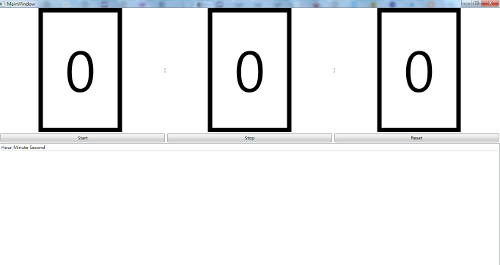Will Metro UI kill WPF?
Windows 8 will use Metro UI, even it support xaml.But that is different from WPF.Will Metro UI kill WPF? Around 2008, WPF started to get the market. At that time, I had asked whether WPF will kill Winforms. But now, I am writing some Winform applications. Winform is still alive, that is too early to say whether Metro UI will kill WPF. Moreover, Metro UI sounds a Tablet UI rather than a Desktop UI. So, I still thinks WPF will worth while.
Custom Membership Provider
Custom Membership Provider is easy to do. Firstly, please extends MembershipProvider
Code
public class AdvCMSMembershipProvider : MembershipProvider |
Secondly, Right Click MembershipProvider, and then implements all abstract methods.
The only method you need to change:
Code
public override bool ValidateUser(string username, string password) | |
{ | |
IAdvUser user = userRepository.GetByUserName(username); | |
| |
return user.Password == password; | |
} |
Lastly, chaging web.config
Code
<membership defaultProvider="AdvCMSMembershipProvider"> | |
<providers> | |
<clear/> | |
<add name="AdvCMSMembershipProvider" | |
type="AdvCMS.Security.AdvCMSMembershipProvider, AdvCMS.Security" /> | |
</providers> | |
</membership> |
Please download our opensource project, AdvGenCMS, as the example.
Timer in WPF
In Windows Form time, there is a component for Timer. But in WPF, there is not such things. So, what thing we can do, when we need to execute a piece of code periodically. We can use the timers under System.Timers. But please do not use System.Timers.Timer, because it triggered, it will execute the code in a new thread. If you try to access any controls in WPF Windows, the system will throw an exception. I like to use System.Windows.Threading.DispatcherTimer in WPF, because that is very similar with the Timer in Windows Timer.
There are the example code:
Code
DispatcherTimer sysTimer = new DispatcherTimer(); | |
sysTimer.IsEnabled = true; | |
sysTimer.Interval = new TimeSpan(0, 0, 1); | |
sysTimer.Tick += new EventHandler(sysTimer_Tick); |
To find more about this, please download the example project, AdvGenStopWatch.
WPF Example Code - AdvGenStopWatch

I created an opensource project, AdvGenStopWatch. This is a simple stop watch program and aimed to show how to use WPF. Including the following features:
- How to use Grid Layout and ViewPoint, this make all elements will be autosize.
- How to use Timer in WPF
- How to use ListView
I believe this is a good starting point to learn WPF.
FireBug in Server Side for .Net
Yesterday, I went to the QLD MSDN User Group Meeting. One of presenters shows his opensource project, Glimpse. That is very very cool! This project is a Server Side version of FireBug in .Net. It will add a collapsible div at the bottom of page. In the div, all about the current request, including the server variable and session id, even MVC route. That is so cool! In addition, inside your code, you can add the track and the div will show them as well. Lastly, there is a remote tab inside this div. In the remote tab, you get the request information about the other clients which are on the same application. That is very helpful to mobile development. You can go into a page in the desktop and access the request information which is from the other mobile clients, rather than directly accessing them from a mobile device. I highly recommend to spend some time on learning this project!
